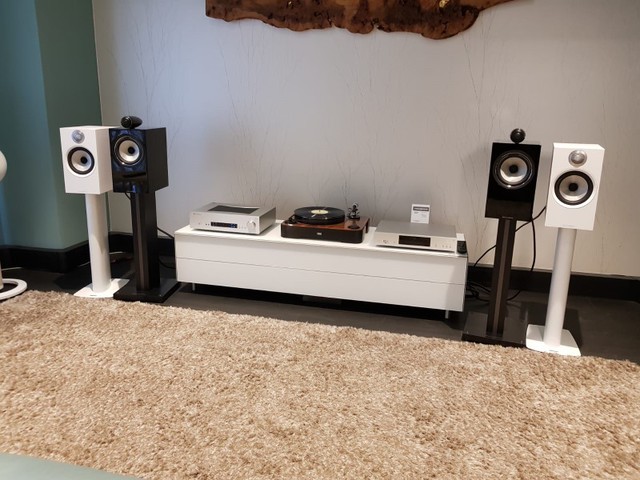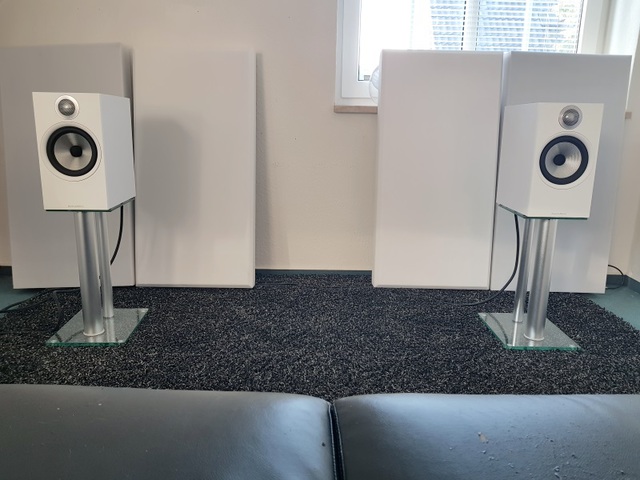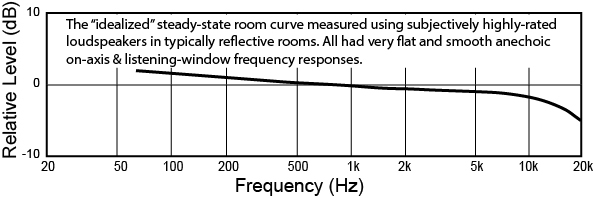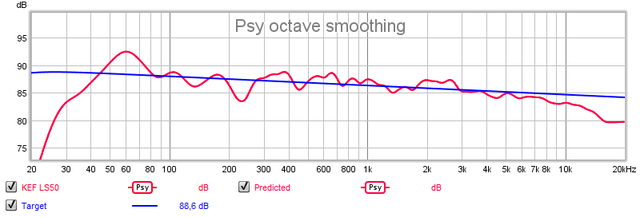B&Ws voicing is often underestimated, also by me in the past.
A couple of years ago I was at a hi-fi studio and heard the current 705 S2 and being a KEF fan compared them directly with a pair of KEFs in the similar price range (R3):

As you can see in the room, Hifi Studio was usually more acoustically "livelier" than mine, but therefore more representative of an average modern living room, listening distance was around 3 meters so rather diffuse field. I heard with both Eagles - Hotel California Live, Marla Glen - The Cost of Freedom and Jennifer Warnes - Bird on a Wire, all good recordings that are often used in listening tests (e.g. Marla Glen at Hifi-Selbstbau.de, Jennifer Warnes at the Harman Group) and it was switched several times in each song directly via the AB function of the amplifier, unfortunately not leveled, but the perceived loudness differences were small and I was able to reduce them further with the remote control.
Well, in this room and listening distance, as expected, the image was much more diffuse than I am used to in my more dampened room and smaller listening distances, so I mainly focused on the tonality and cleanliness of the reproduction. As expected, both sounded very clean and you could hear some fine details. Tonally, the B&W worked damn well in the room with these recordings, I don't know what I would change there. The KEF, on the other hand, sounded too dark and sometimes like "cupped hands" which I didn't know from my LS50 or the outstanding Blade 2 at KEF in England. In retrospect, however, I am annoyed that I no longer turned the KEF towards myself, the B&W is more likely to be set up relatively parallel to the wall. In any case, in this setup and room I'm pretty sure that most of the listeners would have preferred the B&W, it just sounded nice (even if it was embellished) but without being too artificial. When I got back home 15 minutes later, I immediately listened to these 3 tracks with my "B&W Voicing" on my Genelec and this "slightly sugary" pleasant feeling was there again. In summary, in the room and this (not wrong because not too far from the front wall) setup, the current B&W Voicing worked excellently for me, but this does not mean that it always has to be like that, as iny some was due to hi-fi shows and a store I also had different memories.
After I liked the B&W 705 S2 in comparison with the KEF R3, I went to the same dealer again few weeks later to compare the 705 with the inexpensive 606 with the same woofer and fairly similar measurements: 6 tracks were played again which I know well and switched directly to each one several times, in fact the differences were small and even barely detectable for some songs, the 705 had a tad more withdrawn mids and its image was larger, although that changed when we then put the 606 on the outside like on the picture.

So from curiosity I spontaneously bought the inexpensive pair 606 in order to be able to make more tests and comparisons with my KEF LS50 Anniversary. So that the comparison is fair, I set up both pairs one after the other in the identical positions, which fortunately are also the ones that both manufacturers recommend, i.e. at least 50 cm to the sides and the back wall, in my case 80 cm to the side and 50 cm to the rear. I didn't turn both of them in because they both measure each other more balanced at angles, so that looks from the listening position (unfortunately I forgot to take the photo with the KEF):

As you can see, I've also put my subwoofer away and deactivated any EQ or DSP. Enclosed listening position measurements of both pairs, each as an average of L + R as well as with psychoacoustic smoothing, since such a representation correlates more with our perception, I have increased the less efficient KEF in the plot by 3.5dB so that both can be better compared:

In my opinion, there are mainly 5 significant tonal differences that can be heard. The B&W goes much deeper in my listening room and has the -3dB point at an impressive 25 Hz, so it sounds "grown up" in the bass, like a good floorstanding speaker. The upper bass of the KEF is slightly raised in comparison to my listening room, possibly also to compensate for the missing deep bass, which also slightly changes the fundamental tone of male voices or the electronic bass, e.g. with EDM. Between 2-3 kHz you can clearly see the euphonic presence dip of the B&W mentioned by me in the first post of the thread, which makes it sound pleasant, the KEF is unfortunately a bit too powerful, which makes a good saxophone recording sound very impressive, but with some recordings can also be annoying and e.g. but was corrected with later active LS50s and Metas. In the high-frequency range you can also see the sibilant dip around 5-6kHz I mentioned at the beginning of the B&W, which takes the sharpness of the high-frequency and S-sounds, as well as a slight exaggeration over it, which gives a little more "details" and "shimmer" to a good recording.
The two dips of the B&W and the excessive presence of the KEF can also be seen well if you compare the listening position measurements with the ideal listening position curve (i.e. good loudspeakers in a good room) from Toole, with both doing well, the only major deviation is in the upper bass and partly in my setup and Walls in debt. In a few words, in my opinion, a very clever voicing is confirmed, the whole thing does not sound 100% neutral like, for example, with my Genelec, but still coherent and pleasant at the same time, so that, like the Polish tester, I would not immediately know what to change would.











